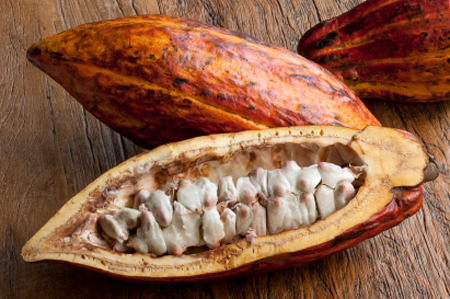Hopes fade for higher Ghanaian cocoa crop
Category: Cocoa
 (Agrimoney) – Elevated estimates for the Ghanaian cocoa crop, which have fostered a sharp retreat in cocoa futures, may have been misplaced.
(Agrimoney) – Elevated estimates for the Ghanaian cocoa crop, which have fostered a sharp retreat in cocoa futures, may have been misplaced.
“Hopes appear to be fading that cocoa production in Ghana – the second-largest producer country – will make a significant recovery,” said Commerzbank.
“According to government sources, Ghanaian cocoa production this crop year is unlikely to exceed 750,000 tonnes, and as such will hardly be higher than last year,” the bank said.
This would be a sharp downgrade from earlier forecasts of 850,000-900,000 tonnes.
Strong Harmattan
Production in Ghana has been hit by an unusually strong Harmattan, which developed in January.
The Harmattan, the cold, dry wind which blows across West Africa from the Sahara over the winter months, has been exacerbated by the effects of this year’s strong El Nino, which causes dryness in the season.
“Strong Harmattan winds have sucked moisture out of the soil and hampered development of the cocoa beans,” Commerzbank said.
“At the same time there was too little rain to counteract this.”
Market scepticism remains
There has been some scepticism over the apparent rapid deterioration of prospects, which reports of damage being viewed “with a suspicious eye,” said analyst Judith Ganes-Chase.
“El Nino seemed to be receding,” said Ms Ganes-Chase, “But conditions rapidly deteriorated later in January and reports of extensive damage to the West African mid-crops was reported from the dusty winds and quick evaporation of the soil moisture.”
“The suddenness of this took the market by surprise, with many wondering if the anecdotes of harsh losses was even credible,” she added.
The swing from reports of a larger than expected main-crop, to fears of a significantly smaller mid-crop, has been very rapid.
“Even for the cocoa market, this type of possible sudden steep downgrading is highly unusual,” Ms Ganes-Chase said.
Disappointing prospects
The reduced forecast would spell a second season of weak production from Ghana, where the crop fell 18% to 740,000 tonne last year.
Cocoa prices fell sharply in January, losing nearly 15% over the month, but have since remained range-bound.
“If this pessimistic crop forecast for Ghana were to be confirmed, the global cocoa market would doubtless show a substantial supply deficit this crop year, allowing cocoa prices to launch a renewed bid to achieve their end of 2015 highs,” Commerzbank said.
“After all, the price slide in the meantime was largely due to an expected recovery of the Ghanaian crop.”
Ivorian threat
And the Harmattan winds also affect neighbouring Ivory Coast, the world’s top grower.
Last week Commerzbank waned of a “slump” in productionin the mid-crop, which runs from April to December.
The mid-crop rarely yields export grade beans, but is sold on to domestic processors at subsidised rates.
Mid-crop losses are estimated up to 200,000 tonnes, compared to a total mid-crop harvest of 514,000 tonnes in 2015.
March cocoa futures in New York were trading down 2.0% on Thursday afternoon, at $2,770 a tonne, holding just above late January lows.

